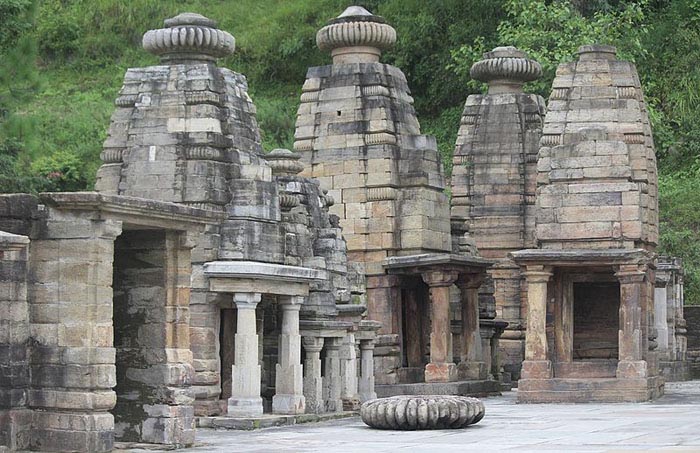Katarmal Sun Temple

Information of Katarmal Sun Temple, Ranikhet, Almora, Uttarakhand
Katarmal Sun Temple is 2nd among the 4 Sun Temples built in the Indian Sub Continent. This is an ancient monument and an historical site maintained by the Archeological survey of India. The Sun temples are one of the major worship places in the Sankranthi times (Winter Solstice and Summer Solstice). On this two special days many Hindus goes to the Sun temple and perform prayers. The sun's rays directly beams towards the shrine-cell, where the sun god is placed and make it glow on the solstice day. To see this special astronomical event on this temple structure many come here on the summer and winter solstice day. It is divinely located near Kosi Village, Ranikhet, Almora District of Uttarakhand State in India.
Katarmal Sun Temple Religious Significance
Katarmal Sun Temple is dedicated to the Sun God named Vraddhaditya. He is a major God of Hindus and many do pray to Sun God after the morning bath and do a Surya Namaskaram or praying the morning sun to bless us daily by proving light and life on the Earth. It is done by all Hindu peoples and many consider it as the highest order of worship in Hinduism. This temple is also of such importance and visiting these sun temples on the Sankaranthi day is believed to be more powerful. The primary deity is Sun God and there are also deities of Lord Shiva, Parvathi and Narayana are found. The small 45 temples found here has many sub deities of the primary god.
Festival at Katarmal Sun Temple
The Makara Sankaranthi is the important festival of Katarmal Sun Temple. On this day many come here to see the sun's rays falling directly on the main deity, which occurs on the Sankranthi day only. This is also known as the onset of fertile life on earth. This special occasion is celebrated with many agricultural harvest produce and its villagers offer the first produce to Sun God, since because of him only the life exists on Earth.
Katarmal Sun Temple Mythology & History
Katyuri Kings were well known for the religious and architectural values in the Kumon region of the Himalayas. During their reign, they built many Hindu temples on the Himalayas. This sun temple is a rear and is seen as a masterpiece one. It is believed that this temple was built since someone from Kumon has visited the Konark Sun temple in Puri-Orrisa and the same dynamics has been applied on this temple. But the architectural values differ in all four such temples found in India. The main architecture or the kings only know the secret of such dynamics that have been adopted to make it a unique temple of astronomical precision on earth. Since it was built by King Katarmal, the temple is also named after him.
Katarmal Sun Temple Architectural Significance
Katarmal Sun Temple was built by Katyuri Kings of Kumoun Region somewhere around 9th century AD. This temple is built with astronomical precision on Earth. This temple is built at an elevation of 2116 meters on the Himalayas and the temple is facing towards East direction. There are 45 temples surrounded around one huge temple. The importance of this temple is it is built in such a way that the sun's rays on the occurrence of winter and summers solstice day directly reached its sanctum sanctorum. That's why it is named as the Sun temple. So far no one is able to understand its architectural values of such astronomical event occur on this temple structure. The entire temple is built of granite stones and is found in the Huna architectural style. The main structure is a tiered tower with a projected medium tower from its main building. The other 45 small temples are built here and seen in the same design of the main tower structure. The entrance of this temple looks in a Roman style design. Either a triangular shaped dome is made stood on a porch having four giant pillars. It has slanting roof and the inner side of the structure is looking like a traditional home. There are many beautifully carved god and goddesses sculptors found here. It is one of the great masonry works ever done on the Himalayas in a temple structure. Each and every structure is so unique to look.
- Andhra Pradesh Temples
- Assam Temples
- Bihar Temples
- New Delhi Temples
- Goa Temples
- Gujarat Temples
- Jammu and Kashmir Temples
- Karnataka Temples
- Kerala Temples
- Madhya Pradesh Temples
- Maharashtra Temples
- Odisha Temples
- Punjab Temples
- Rajasthan Temples
- Sikkim Temples
- Tamil Nadu Temples
- Telangana Temples
- Uttar Pradesh Temples
- Uttarakhand Temples
- West Bengal Temples